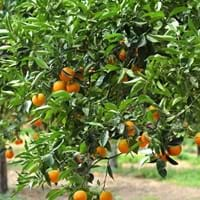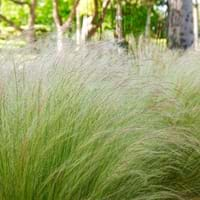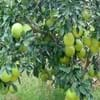Life Span
Perennial
Perennial
Origin
Southern Asia, India, Melanesia, Australia
Southwestern United States, Texas, Mexico
Types
oranges, grapefruit, lemons
Not Available
Habitat
agricultural areas
driveways, open Woodlands, Roadsides, Rocky areas, Slopes, tree wells
USDA Hardiness Zone
Not Available
6-10
AHS Heat Zone
Not Available
11 - 4
Sunset Zone
Not Available
2b, 3a, 3b, 4, 5, 6, 7, 8, 9, 10, 11, 12, 13, 14, 15, 16, 17, 18, 19, 20, 21, 22, 23, 24
Habit
Oval or Rounded
Clump-Forming
Minimum Height
Not Available
Flower Color
White, Purple, Ivory
Not Available
Flower Color Modifier
Bicolor
Bicolor
Fruit Color
Yellow, Red, Green, Orange
Non Fruiting Plant
Leaf Color in Spring
Green, Dark Green
Green, Light Green
Leaf Color in Summer
Green, Dark Green
Light Green
Leaf Color in Fall
Green, Dark Green
Green, Yellow green, Tan
Leaf Color in Winter
Light Green
Green, Yellow green, Gold, Tan
Leaf Shape
Toothed
Linear
Plant Season
Spring, Summer, Fall, Winter
Spring, Summer, Fall, Winter
Sunlight
Full Sun, Partial Sun
Full Sun, Partial Sun
Growth Rate
Medium
Medium
Type of Soil
Clay, Loam, Sand
Clay, Loam, Sand
The pH of Soil
Acidic, Neutral, Alkaline
Acidic, Neutral, Alkaline
Soil Drainage
Well drained
Well drained
Bloom Time
Not Available
Early Summer, Summer
Repeat Bloomer
Not Available
No
Tolerances
Drought
Drought
Where to Plant?
Ground
Ground
How to Plant?
Seedlings, Stem Planting
Seedlings
Plant Maintenance
Medium
Medium
Watering Requirements
Keep ground moist
Do not water excessively
In Summer
Lots of watering
Lots of watering
In Spring
Moderate
Moderate
In Winter
Average Water
Average Water
Soil pH
Acidic, Neutral, Alkaline
Acidic, Neutral, Alkaline
Soil Type
Clay, Loam, Sand
Clay, Loam, Sand
Soil Drainage Capacity
Well drained
Well drained
Sun Exposure
Full Sun, Partial Sun
Full Sun, Partial Sun
Pruning
Remove damaged leaves, Remove dead branches, Remove dead leaves
Requires little pruning
Fertilizers
All-Purpose Liquid Fertilizer
Apply 12-6-6 fertilizer
Pests and Diseases
Red blotch
Not Available, Red blotch
Plant Tolerance
Drought
Drought
Flower Petal Number
Single
Single
Fragrant Bark/Stem
Yes
No
Foliage Texture
Medium
Fine
Foliage Sheen
Glossy
Matte
Attracts
Birds, Butterflies
Not Available
Allergy
Itchiness, Oral Allergy
Not Available
Aesthetic Uses
Not Available
Landscape Designing, Showy Purposes, small hedge
Beauty Benefits
Good for skin and hair, Makes teeth white, Skin cleanser
Not Available
Environmental Uses
Air purification
Air purification
Medicinal Uses
Kidney Stones, scurvy, Stomach Cancer
No Medicinal Use
Part of Plant Used
Flowers, Fruits, Leaves
Leaves
Other Uses
Not Available
Used as Ornamental plant
Used As Indoor Plant
Yes
No
Used As Outdoor Plant
Yes
Yes
Garden Design
Container, Edible, Feature Plant, Fruit / Fruit Tree, Houseplant, Shade Trees, Topiary / Bonsai / Espalier, Tropical
Dried Flower / Everlasting, Container, Foundation, Mixed Border, Rock Garden / Wall
Botanical Name
CITRUS
NASSELLA tenuissima
Common Name
Citrus
Finestem Needlegrass, Mexican Feather Grass
In Hindi
निम्बू-वंश
Mexican Feather Grass
In German
Zitruspflanzen
Mexikanische Federgras
In French
Citrus
Mexicaine Herbe Feather
In Spanish
Citrus
Pluma hierba mexicana
In Greek
Citrus
Μεξικού Αστραπή Grass
In Portuguese
Citrus é um género
Mexican Pena Relva
In Polish
Cytrus
Mexican Feather trawy
In Latin
citrus
Mexicanus Pluma Grass
Phylum
Magnoliophyta
Magnoliophyta
Class
Magnoliopsida
Liliopsida
Order
Sapindales
Cyperales
Clade
Angiosperms, Eudicots, Rosids
Angiosperms, Commelinids, Monocots
Subfamily
Asteroideae
Not Available
Importance of Citrus and Mexican Feather Grass
Want to have the most appropriate plant for your garden? You might want to know the importance of Citrus and Mexican Feather Grass. Basically, these two plants vary in many aspects. Compare Citrus and Mexican Feather Grass as they differ in many characteristics such as their life, care, benefits, facts, etc. Every gardener must at least have the slightest clue about the plants he wants to plant in his garden. Compare their benefits, which differ in many ways like facts and uses. The medicinal use of Citrus is Kidney Stones, scurvy and Stomach Cancer whereas of Mexican Feather Grass is No Medicinal Use. Citrus has beauty benefits as follows: Good for skin and hair, Makes teeth white and Skin cleanser while Mexican Feather Grass has beauty benefits as follows: Good for skin and hair, Makes teeth white and Skin cleanser.
Compare Facts of Citrus vs Mexican Feather Grass
How to choose the best garden plant for your garden depending upon its facts? Here garden plant comparison will help you to solve this query. Compare the facts of Citrus vs Mexican Feather Grass and know which one to choose. As garden plants have benefits and other uses, allergy is also a major drawback of plants for some people. Allergic reactions of Citrus are Itchiness and Oral Allergy whereas of Mexican Feather Grass have Not Available respectively. Having a fruit bearing plant in your garden can be a plus point of your garden. Citrus has showy fruits and Mexican Feather Grass has showy fruits. Also Citrus is not flowering and Mexican Feather Grass is not flowering . You can compare Citrus and Mexican Feather Grass facts and facts of other plants too.





